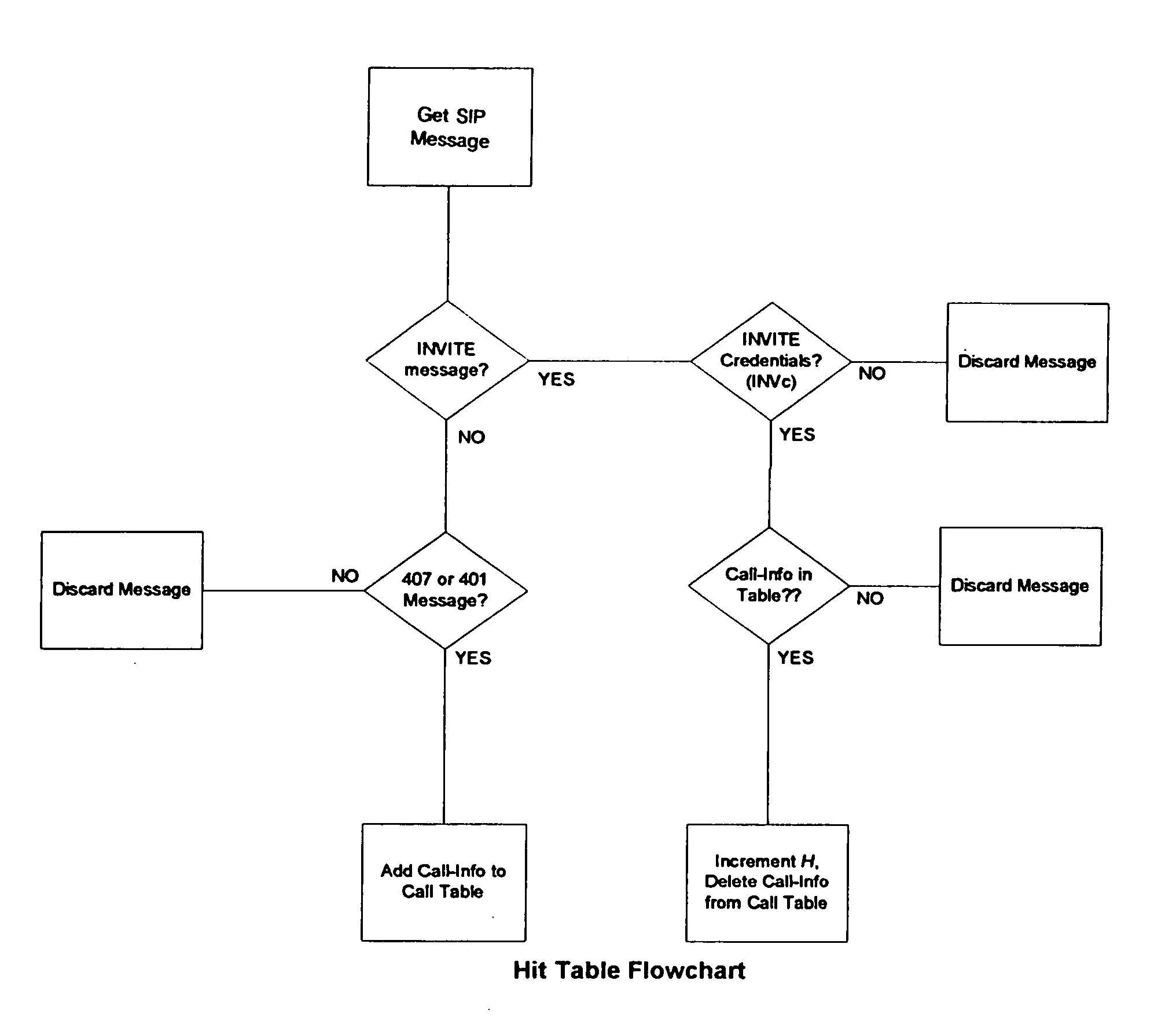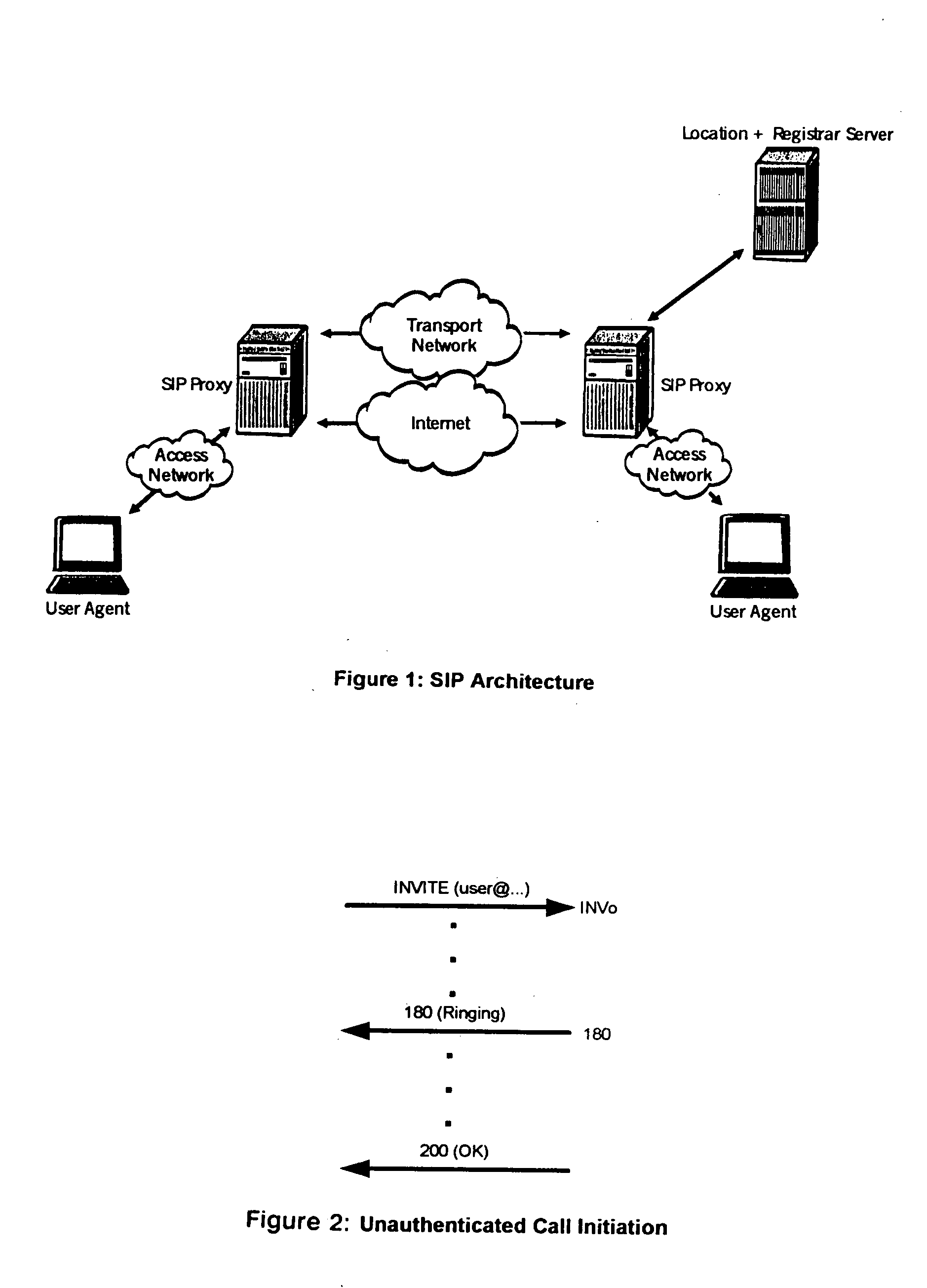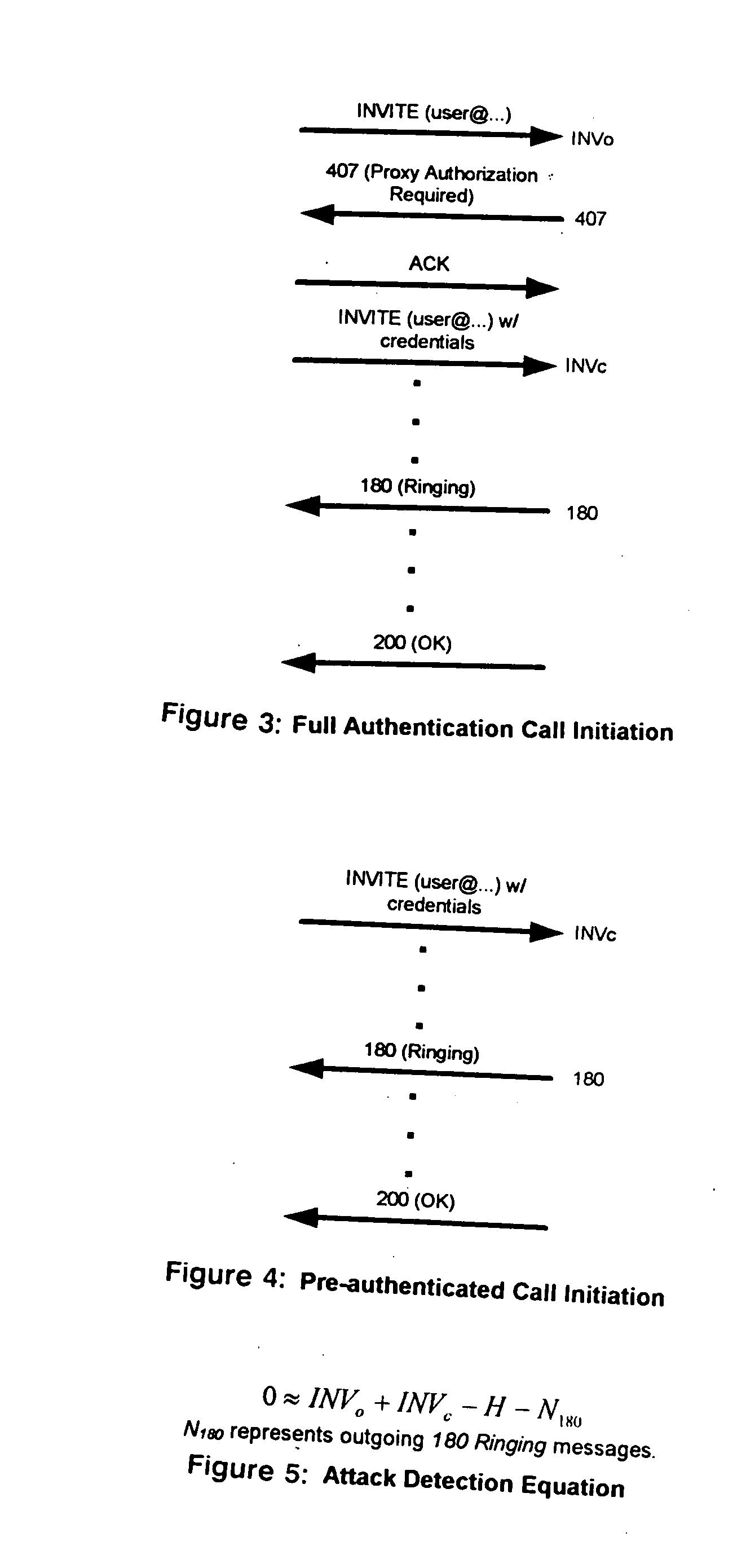Detection of denial of service attacks against SIP (session initiation protocol) elements
a denial of service and element technology, applied in the field of denial of service attacks against sip (session initiation protocol) elements, can solve the problems of system being vulnerable to attacks, sip element encountering resource exhaustion, sip element cannot process messages,
- Summary
- Abstract
- Description
- Claims
- Application Information
AI Technical Summary
Benefits of technology
Problems solved by technology
Method used
Image
Examples
Embodiment Construction
[0019] The present invention examines the balance between incoming INVITE and outgoing 180 Ringing messages. The 180 message is re-sent by the server once the destination user agent has been identified and has been successfully contacted. The 180 message is sent regardless if the end user answers the call or not and thus identifies a legitimate call.
[0020] The present invention differentiates between INVITE messages with authentication credentials given in the “Proxy-Authorization” header field (INVc) and those without (INVo). For a system with no authentication enabled (FIG. 2), the number of INVo messages should be approximately equal to the number of 180 Ringing messages. In a system with authentication enabled for all users (FIG. 3) the number of INVc messages will be approximately equal to the number of 180 messages. For these systems it is possible to use change-point detection techniques to determine when the two values suddenly are out of balance. The imbalance indicates th...
PUM
 Login to View More
Login to View More Abstract
Description
Claims
Application Information
 Login to View More
Login to View More - R&D
- Intellectual Property
- Life Sciences
- Materials
- Tech Scout
- Unparalleled Data Quality
- Higher Quality Content
- 60% Fewer Hallucinations
Browse by: Latest US Patents, China's latest patents, Technical Efficacy Thesaurus, Application Domain, Technology Topic, Popular Technical Reports.
© 2025 PatSnap. All rights reserved.Legal|Privacy policy|Modern Slavery Act Transparency Statement|Sitemap|About US| Contact US: help@patsnap.com



